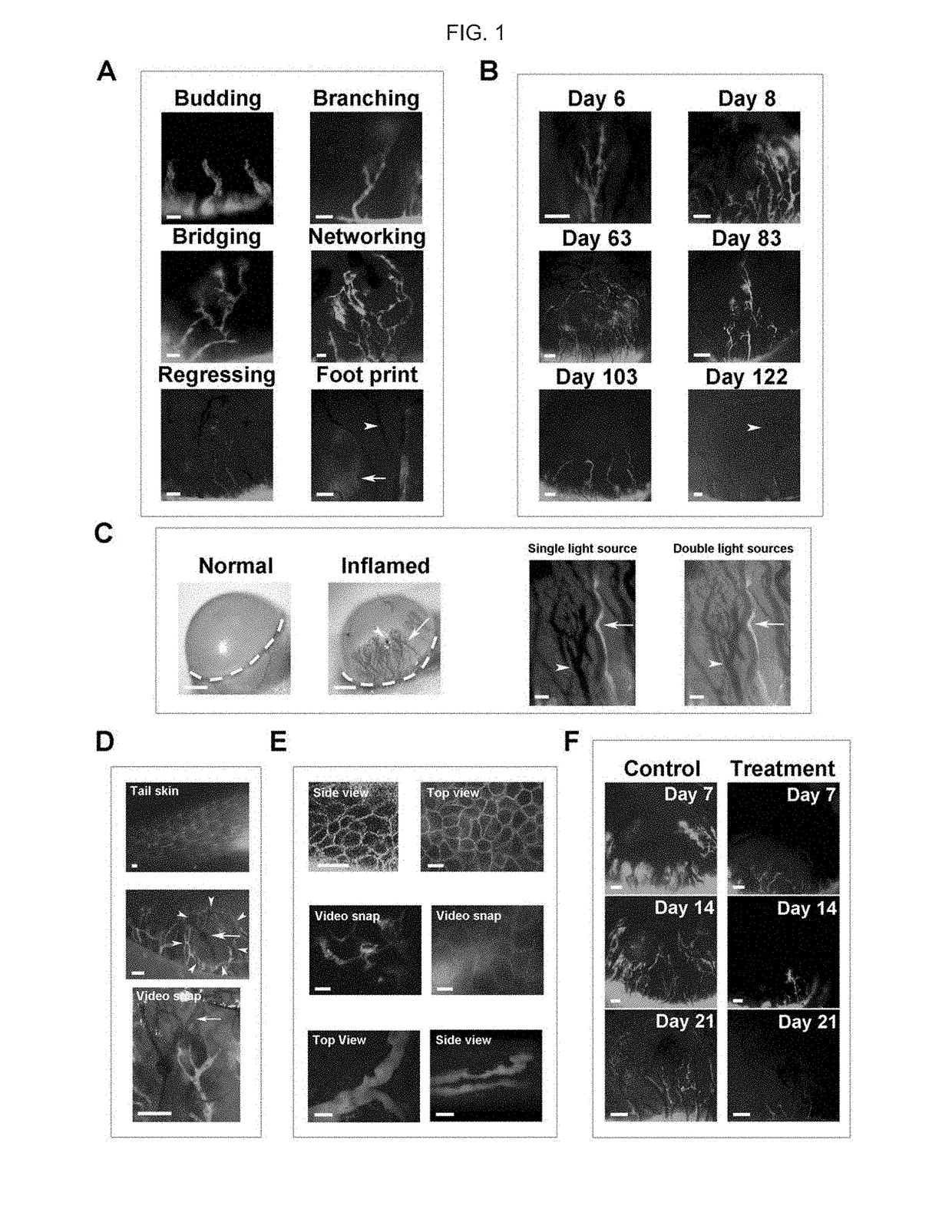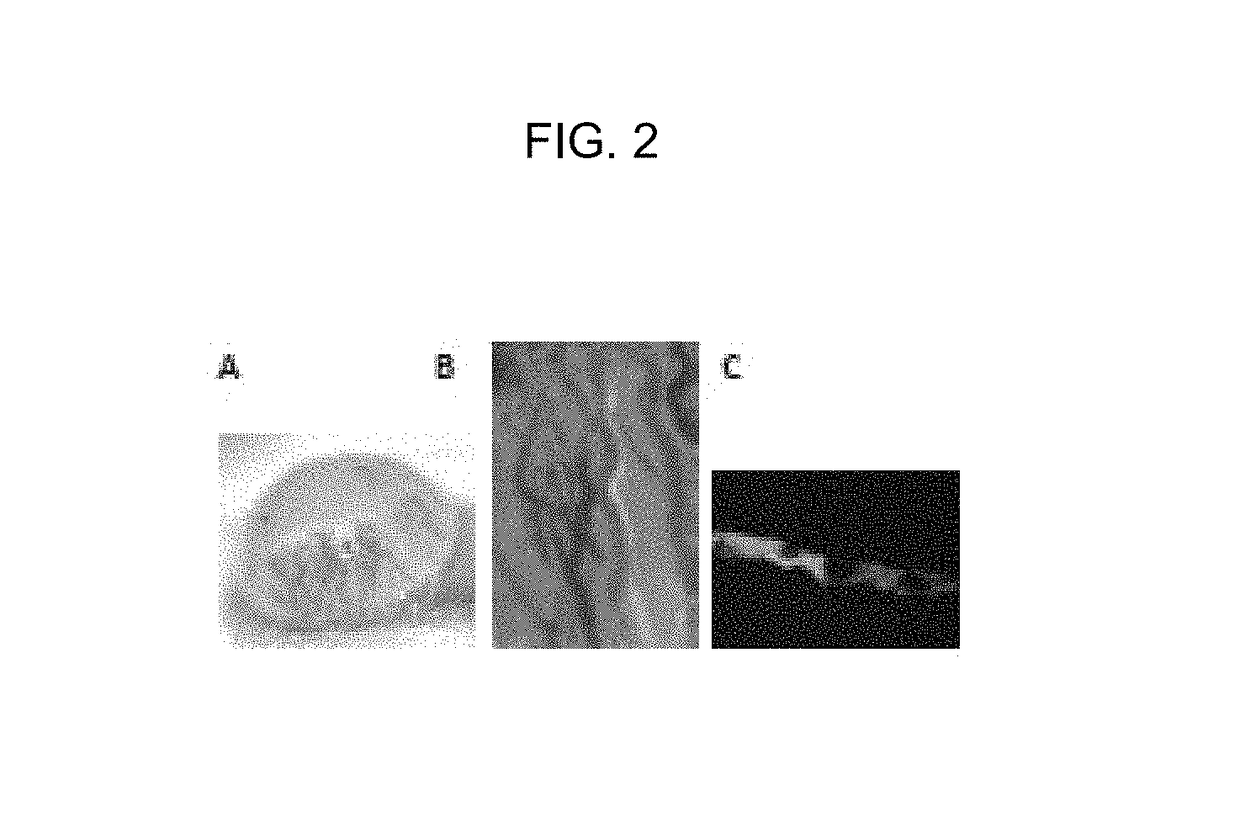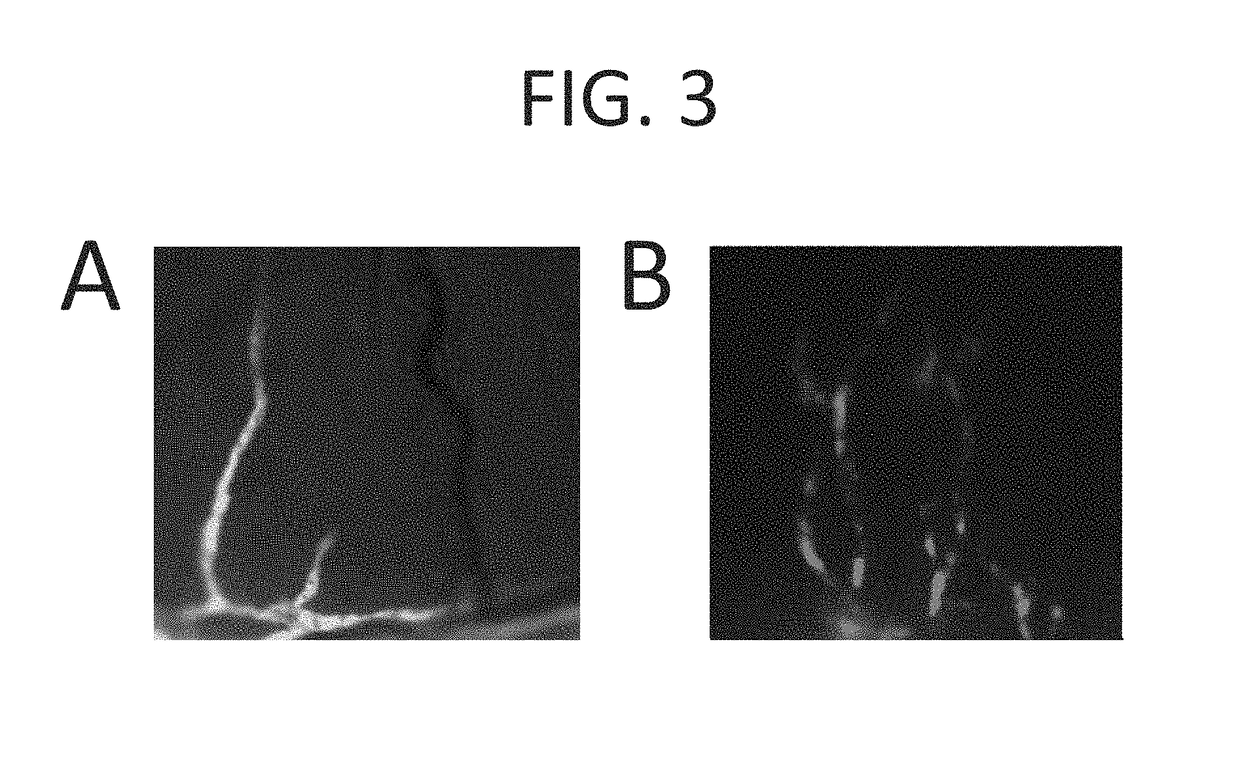In vivo visualization of lymphatic tissue
a lymphatic tissue and in vivo technology, applied in the field of in vivo visualization of lymphatic tissue, can solve the problems of poor lymphatic disease treatment effect, long time-consuming and laborious, and long time-consuming, and achieve the effects of reducing the risk of lymphatic disease, and improving the quality of li
- Summary
- Abstract
- Description
- Claims
- Application Information
AI Technical Summary
Benefits of technology
Problems solved by technology
Method used
Image
Examples
example 3
C. Advantages of Live Imaging of Lymphatic Vessels in the Cornea Over Other Non-Transparent Tissues, Such as the Skin
[0089]The advantages of live imaging of lymphatic vessels in the cornea over other non-transparent tissues, such as the skin, which is normally endowed with lymphatic vessels, were demonstrated. As shown in FIG. 1, Panel D, live imaging of tail skin, a site used for lymphatic imaging in previous studies, revealed a cross-sectional view of the lymphatics, which was obscured by a layer of body hairs (FIG. 1, Panel D, upper image). In contrast, imaging within the cornea, a transparent tissue that is free of any pre-existing or background vessels, showed an entire tree of newly formed lymphatic vessels from their peripheral roots to central branches (FIG. 1, Panel D, middle image). This method also enabled the observation of the lymphatic vessels in the context of their local and physiological environment, which also harbored newly formed blood vessels and the site of pa...
PUM
 Login to View More
Login to View More Abstract
Description
Claims
Application Information
 Login to View More
Login to View More - R&D
- Intellectual Property
- Life Sciences
- Materials
- Tech Scout
- Unparalleled Data Quality
- Higher Quality Content
- 60% Fewer Hallucinations
Browse by: Latest US Patents, China's latest patents, Technical Efficacy Thesaurus, Application Domain, Technology Topic, Popular Technical Reports.
© 2025 PatSnap. All rights reserved.Legal|Privacy policy|Modern Slavery Act Transparency Statement|Sitemap|About US| Contact US: help@patsnap.com



